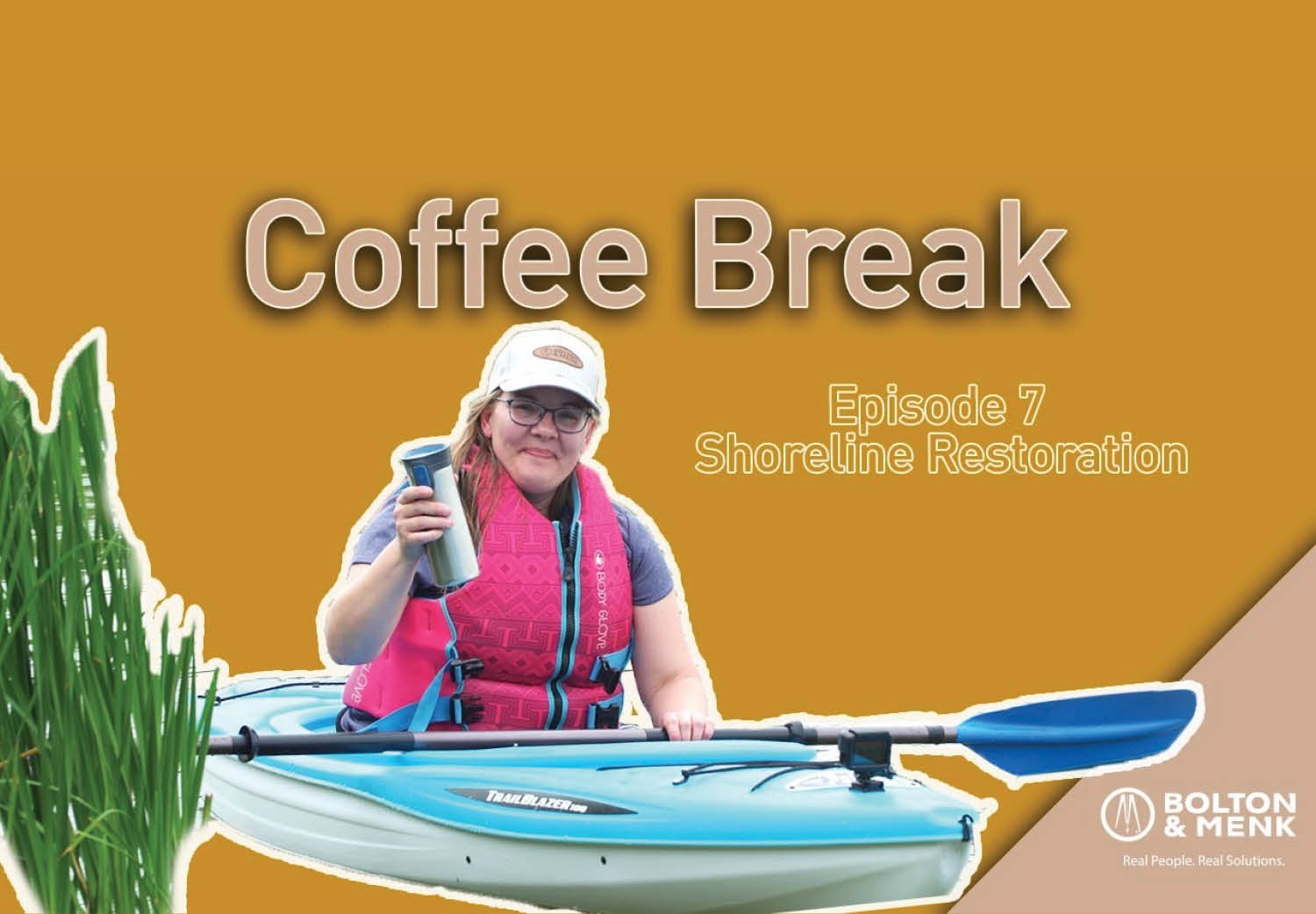
Coffee Break: Shoreline Restoration
Warm summer days means more time on the water and taking in beautiful lake and river shorelines from your boat or kayak. In this month’s Coffee Break, Roberta Cronquist, senior water resources engineer, explains how restoring shoreline vegetation is a crucial part of maintaining the aquatic ecosystem.
RC: The state actually has a…. let me start again! *laughs* Okay, okay I got it! Ask me the question again – let me back up, I kind of drifted.
Coffee Break Episode 7 – Shoreline Restoration
RC: I feel weird kayaking in like 8 inches of water. *laughs* I should just stick my hand out… push myself around… okay.
Name and position at Bolton & Menk and how do you take your coffee?
RC: My name is Roberta Cronquist and I’m a senior water resources engineer in the Burnsville office. I take my coffee black, decaf, and always in a travel mug because I spill all the time.
Why is shoreline restoration beneficial?
RC: The vegetation around shorelines really is a key component in a healthy ecosystem in our lakes and streams and rivers. By restoring the shoreline, we can bring back vegetation that maybe was damaged due to erosion, and that can be from natural causes or from human interactions. By bringing all of that back and restoring the shoreline, we’re really just improving the health of not just that water body, but all the water bodies within that watershed.
What goes into the shoreline restoration process?
RC: Really the first step is trying to figure out what’s causing the problem and then once we get a sense of what’s causing it, we can look for sources of pollutants, we can look for sources of excess runoff and try to deal with those on more of a watershed level. At the shoreline level, a lot of it turns into revegetation programs establishing native vegetation back into the landscape. In a lot of areas, vegetation has been removed because it was considered a nuisance, but we realize now that it’s really an important part of a healthy, living shoreline in our lakes.
How has the process of shoreline restoration evolved?
RC: We’re seeing more and more that people are recognizing the benefit and the abilities of vegetation to really heal some of the damage that’s been done along lake shores and along shorelines. Historically, people would just come in and grate it out, put in a bunch of sand, put in a bunch of rock and try to just armor it, but that really just left a gap in the biodiversity of that stream or lake or shorelines. Now, by incorporating the native vegetation into the restoration process, we can soften the look of some of those areas where we still need to do hard armoring, or we can take advantage of the resources we have with vegetation and really improve not just the erosion issue, but also the biodiversity. We can encourage new fish habitats, we can encourage the return of wildlife to the shoreline, so it really creates a much broader benefit than just solving one problem alone.
RC: Okay, hang on, I’m drifting… drifting behind a *laughs*
Shoreline restoration seems like it can be expensive… is there funding available for these projects?
RC: Absolutely there is funding available. They’re looking for projects that are restoring natural habitats, that are encouraging fish habitat areas, that are improving biodiversity, that are improving water quality. Those are all components of shoreline restoration, so those grants are really key to projects that occur along our shorelines.
Anything else you want people to know about what you do?
RC: I think that it’s really encouraging that people are starting to see the benefits of having natural vegetation along our shoreline. It used to be considered a nuisance when you had your shoreline in front of your cabin or your park and you wanted it to be clear and clean but now people are realizing that we were kind of creating a hole in the ecosystem right there. Now, bringing that back is really an important part of the overall health of our lakes and streams, our watersheds as a whole. I would say that, if you love your lake, you should restore your shore.
RC: Thanks for watching, everybody!
